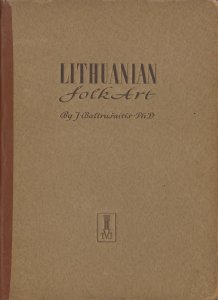Simanaitis Says
On cars, old, new and future; science & technology; vintage airplanes, computer flight simulation of them; Sherlockiana; our English language; travel; and other stuff
FROM LITHUANIA, WITH LOVE
I HAVE been remiss in scant praise of my ancestral homeland, Lithuania. Alas, when I toured nearby during especially historic times (see “He’s Got a Lot of Balts”), the pesky Russkies precluded a Lithuanian visit. Later, I made an attempt at learning the Lithuanian language, though this ended with my fears of being plucked.

Pilies Gatve. Image by Chris Carmichael in “36 Hours in Vilnius, Lithuania,” The New York Times, July 8, 2015.
Now, even The New York Times admits that there’s life east of the Hamptons. Its article “36 Hours in Vilnius, Lithuania,” by Sarah Khan, includes a nicely done six-minute video of Lithuania’s capital.
I enjoyed hearing about Literatu Gatve, Literary Street. Hundreds of posters, paintings, sculptures and mixed-media installations make this street an open-air art gallery with more than one multi-language bookshop.

Lithuanian Folk Art (Lithuania, Country and Nation III), by Jurgis Baltrusaitis, Ph.D., published under Military Government License by T.J. Vizgirda, 1948.
In my own collection, the book Lithuanian Folk Art is a microcosm of the country’s history. Produced in Munich not long after World War II, the book was published “under extremely difficult conditions, the rich materials for illustrations and texts being inaccessible behind the Iron Curtain.”
Over millennia, Lithuania has been fought over, invaded and controlled by Teutonic Knights, Poles, Swedes, Prussians, Russians and Nazis, just about anybody near its borders. High praise arose for a failure of Russification policies in the mid-1800s, attributable to Lithuanians’ widespread book smuggling. My kinda people.
With the Soviet Union crumbling in 1990, Lithuania became the first of its republics declaring independence. This was the time of my Baltic tour, though I admit to having very little influence overall.
Given the heavily forested nature of Lithuania, it’s not surprising that wood has been a primary building material of structures of all sizes. The numas, evolving from prehistory, was a timber-framed, straw-roofed home of several rooms, including separate space for livestock and a porch with southern exposure.
Lithuania was the last pagan country in Europe. Though an early (and only tentative) royal conversion came around 1250, it wasn’t until the 17th century that Christianity took complete precedence over tree worship. On the other hand, unlike many other European countries, Lithuania granted early (and, again, only temporary) freemen status to Jews in 1388. And wood continued as the building material for just about all of its churches and synagogues.
Domestic arts are also important in the Lithuanian tradition. Ornamental belts for men and aprons for women were woven, plaited or sewn, with intricate patterns of wool, linen and even imported cotton.
Another interesting source of Lithuanian lore is Tales of the Amber Sea, again with a political backstory. This book was published in Moscow in 1974, a time when the Soviet Union was flooding the West with inexpensively produced books supporting its world view.

Tales of the Amber Sea: Fairy Tales of the Peoples of Estonia, Latvia and Lithuania, compiled and translated by Irina Zheleznova, illustrated by Anatoly Belyukin, Progress Publishers, 1974.
Like any good fairy tales, these stories are grim (no pun intended, but appropriately referencing the Brothers Grimm). There are plenty of witches’ interventions, threatened dismemberments and other stuff that kids seem to delight in hearing, albeit with shivers.
My favorite is “The Washerwoman and the Count.” Three washerwomen discuss their marital aspirations with the usual differences of opinion: “A man who is tall and has blue eyes,” says the first. “… who is rich,” says the second. “… never one I don’t love,” says the third.
“Catch us believing you!” laugh her friends, “What if the Count should ask you to marry him?”
Sure enough, the Count hears of this third washerwoman and offers her silks and jewels, only to be turned down. Incensed, he demands three waistbands by morning, one bright as the sun, the second bright as the moon, the third bright as the stars—otherwise, off with her head. (Kids giggle and shudder.)
The laumes (witches) tell her not to fret. While she sleeps, they construct the three required belts, which she gives to the Count, albeit still with no hand offered in marriage.
This time, he demands a magical coach—or off with her hands. (Double giggle and shudder.)
The laumes again perform their magic. The Count is still a jerk, and her third task is to give him a mirror that tells the past and the future.
“We’ll fix it so he’ll stop plaguing you,” the laumes say.
The next day, he looks into the magical mirror, sees his noble family of the past—and then sees himself hanging from a tree. (Cheers all around.) ds
© Dennis Simanaitis, SimanaitisSays.com, 2015





